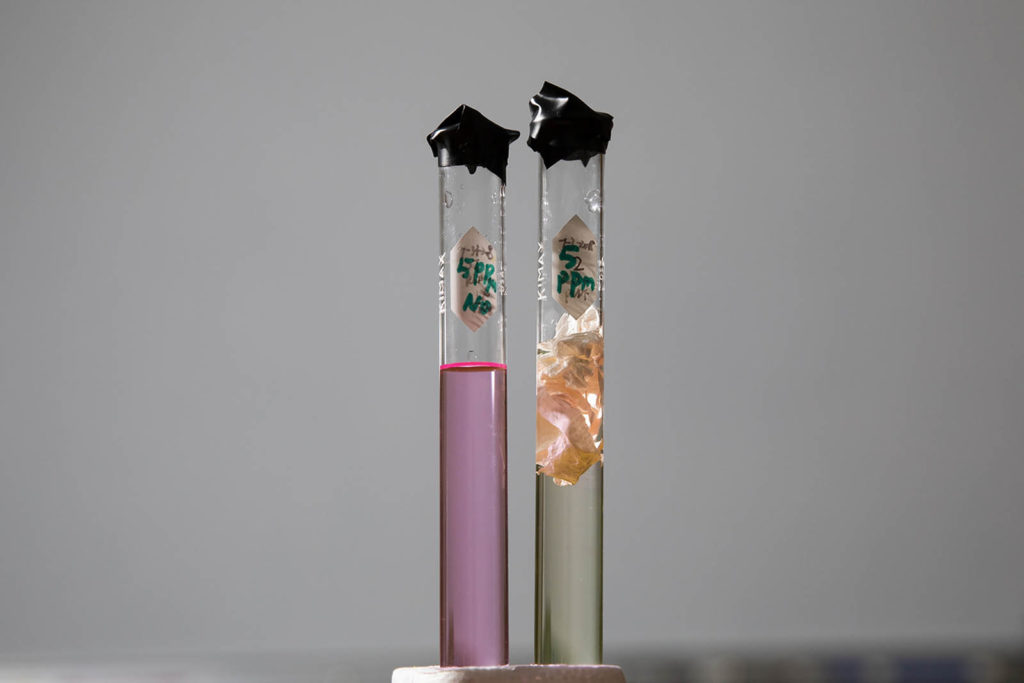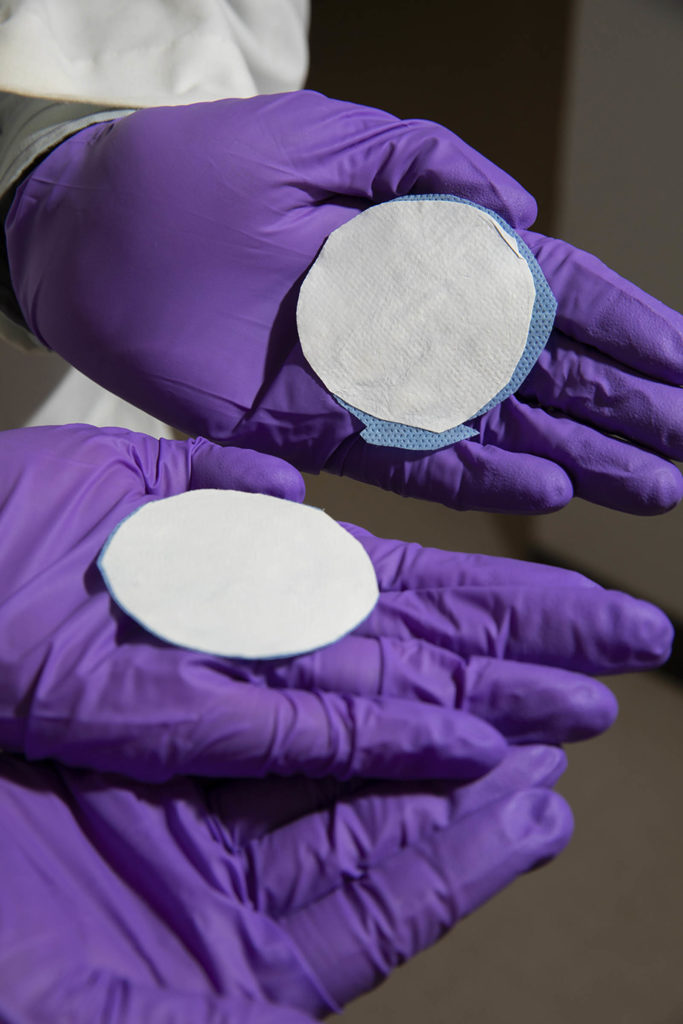High performance and sustainability are the drivers in materials research.
by Seshadri Ramkumar
The textile industry is a major contributor to the manufacturing sector. While labor costs and market competition have forced the textile industry to move from predominantly Western countries to Eastern ones, the high-performance textiles sector that focuses on disruptive and incremental value-added applications is still predominant in the West.
Textile industry-intensive countries such as India are creating national level initiatives such as the Technical Mission on Technical Textiles with emphasis on research and marketing. It is expected that this major initiative by the Government of India would enable the Indian domestic market size to be 40–50 billion dollars by 2024. The U.S. president’s Council of Advisors on Science and Technology (PCAST) has recognized five “industries of the future,” with advanced manufacturing occupying a prominent place.

Advanced textile products belong to value-added manufacturing. These encompass non-commodity applications, such as some industrial textiles, wearable electronic textiles, smart activewear and others. Applications of these products are focused, in large part, on enhancing lifestyles, improving health and protecting the environment. A circular economy and sustainability attributes are also receiving due consideration by the industry, as new ways of utilizing materials and producing cost-effective products are emerging.
New crops as raw materials
Natural fibers, such as organic cotton, flax, jute, coir and hemp, offer new opportunities in industrial and functional applications. Special interest is emerging in the United States in the cultivation of hemp due to the lifting of its prohibition, and with strict regulation on the amount of tetrahydrocannabinol (THC), set at less than 0.3 percent. Additionally, licenses have to be obtained from state agencies for growing.
According to Vote Hemp, 46 states have legalized hemp farming and about half a million acres have been licensed in 2019 to grow hemp. Hemp offers potential in composites, industrial wipes, household furniture and a few construction products. While there has been some hype about the economic potential of hemp for its CBD oil, industrial products and textiles from hemp seem to be its most immediate and viable application.
Biomimetic developments
Imitating nature in the laboratory to develop improved and functionalized textile materials has been the source of inspiration for many companies, with DuPont as an example. Fiber companies have invested resources to develop biomimetic fibers; a notable one is synthetic silk fiber for ballistic protection and other heavy industrial applications. Although the textile industry has not fully tapped into this field, there are a few performance attributes that have made use of biomimetic principles. Water-repellant coated textiles for super hydrophobicity are one example.
Luis Rafael Herrera-Estrella, the president’s distinguished professor of plant genomics at Lubbock-based Texas Tech University, employs biomimetic concepts to develop next generation cotton. As cotton is an important sustainable material and a valuable cash crop for farmers, enabling cotton to grow under severe abiotic stress to yield high quality cotton is a major program for the cotton industry. This will be of immense benefit to the cotton growers in arid regions in Texas, Africa and Central India.
Nature gives unique survival characteristics to certain species. For example, Artemia salina live in salty water, and when the salty water ponds dry out, the eggs can survive for a decade. By understanding the genetic basis for such natural survival tactics, next generation food and cash crops can be developed. Research in Herrera-Estrella’s laboratory focuses on how to mimic the resiliency of Tardigrades, known as water bear, which can survive in extreme climates such as high and low pressures, and deprivation of air and food. Genetic engineering and recombinant DNA technologies are employed to mimic temperature resilience found in Artemia salina, Tardigrades and resurrection plants in crops such as cotton.

Functional synthetics
Fibers and textiles have evolved to achieve value-added functions, such as catalytic cleaning or self-cleaning. In the case of fibers, functionality can be incorporated during fiber extrusion. However, such functionalization processes are most common during post-fabric formation, due to ease of handling, as well as the availability of three-dimensional structures to apply chemicals.
Incorporation of catalytic particles to synthetic filaments can be achieved using the core/sheath extrusion process. Melbourne, Florida-based Hills Inc., has been specializing in the manufacture of such technologies. According to Hills, different types of structures—low melting sheath and high melt core; conductive core; and additive particles on the surface to provide catalytic capabilities—are possible. Machinery developments have led to the improvement of fiber spinnerets that can extrude submicron fibers to produce nonwovens with an enhanced surface area.
Normally, meltblown webs have micron-sized fibers ubiquitously distributed. A collaboration between nonwoven research groups at the University of Tennessee-Knoxville and Texas Tech University has resulted in the development of standalone, single-layer, meltblown webs with fibers in submicron size ranging from 520 to 2000 nm. Meltblown webs, because of lack of strength, are normally used as multilayered webs, which affects the filtration efficiency due to a pressure drop issue.
The industry is diligently working towards achieving high-efficiency, and so the reduction in layers and weight is useful. Therefore, meltblown spinnerets capable of producing sufficient-strength webs will be a good incremental development. Stand-alone submicron webs showed a higher filter-quality factor than normal-sized nonwovens. With the current COVID-19 epidemic, there is a need for high efficiency filters with fine fiber sizes that are at the nanometer level.
Nanofibers: where are we now?
Since the 1990s, when researchers at the University of Akron rejuvenated research interest in stretching polymer solutions to form thin and fine filaments that led to one of the first startups in nanofiber technology, eSpin Technologies Inc., the field has grown and enjoyed good patronage by the U. S. government. Productivity, standardization and sustainability issues need addressing. Certain areas such as medical applications, energy storage and filtration offer plenty of scope for functionalized nanofibers.
Recently, research work at Texas Tech University focused on catalytically decaying toxic dye chemicals using nanofiber as a detoxifying and filtering medium. Titanium dioxide nanoparticles were electrospun into composite nanofibers. These functionalized nanofibers could clean Rhodamine B (RhB). Researchers found that 80 percent of RhB degraded within six hours, and the remaining 20 percent degraded slowly, completely disappearing after 49 days.
An interesting aspect of this functionalization is that the photo degradation occurs using sunlight, an important improvement from earlier methods that normally use UV rays. While nanofibers and nanoparticles have good science to back up their efficiencies and applications, for wide-scale applications, it is still the cost, which drives market acceptance.
What’s next?
The textile industry needs to focus on strategies to advance value-added applications that can cater to the enhancement of human health and protecting the environment. While working on these major initiatives, developments will occur in the conventional sector, much like after World War II, when investments in the defense industry led to growth of other industrial sectors.
Growth can occur if attention is focused on multidisciplinary approaches involving science, engineering and human sciences. As developing new products is the driver for the industry, effective communication about its benefits need to be stressed, not only for marketing the product but also for general consumer acceptance and should be part of then growth equation for the advanced textiles industry.
Seshadri Ramkumar, Ph.D., is the director of the Nonwovens and Advanced Materials Laboratory, Texas Tech University, and a frequent contributor to Advanced Textiles Source.
 TEXTILES.ORG
TEXTILES.ORG


